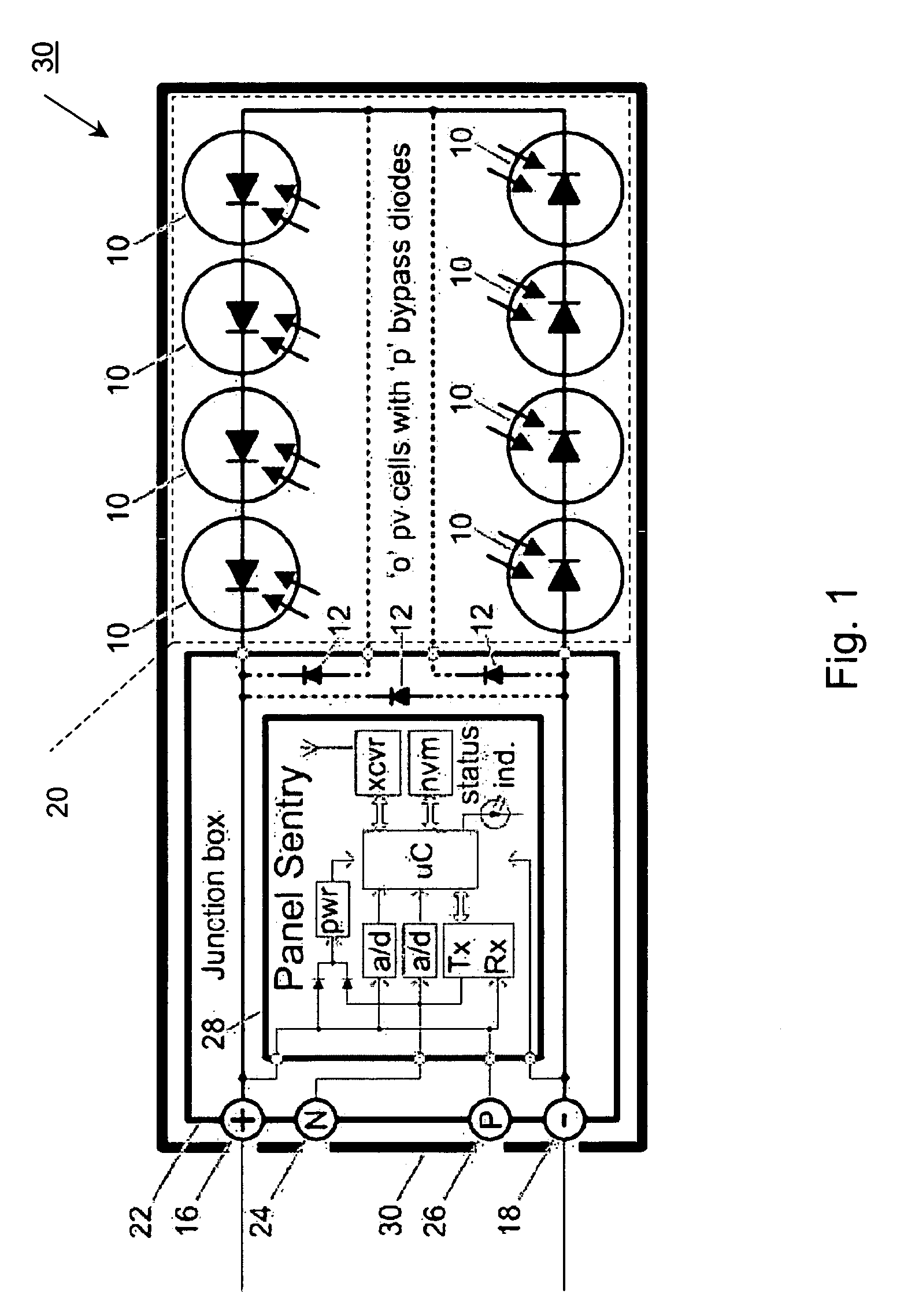System and method for monitoring photovoltaic power generation systems
a photovoltaic power generation and system technology, applied in photovoltaic monitoring, pv power plants, instruments, etc., can solve the problems of lack of self-diagnosis to identify wiring or panels, lack of actionable diagnostic and performance information, and difficulty in discerning performance, so as to facilitate installation, easy to locate and repair or replace panels and wiring, the effect of quick identification
- Summary
- Abstract
- Description
- Claims
- Application Information
AI Technical Summary
Benefits of technology
Problems solved by technology
Method used
Image
Examples
Embodiment Construction
[0042]The present invention will be described in connection with preferred embodiments; however, it will be understood that there is no intent to limit the present invention to the embodiments described herein. On the contrary, the intent is to cover all alternatives, modifications, and equivalents as may be included within the spirit and scope of the present invention, as defined by the appended claims.
[0043]For a general understanding of the present invention, reference is made to the drawings. In the drawings, like references have been used throughout to designate identical or equivalent elements. It is also noted that the various drawings illustrating the present invention are not drawn to scale and that certain regions have been purposely drawn disproportionately or in a partial format so that the features and concepts of the present invention could be properly illustrated.
[0044]The present invention is, in part, concerned with photovoltaic panels which are devices containing o...
PUM
 Login to View More
Login to View More Abstract
Description
Claims
Application Information
 Login to View More
Login to View More - R&D
- Intellectual Property
- Life Sciences
- Materials
- Tech Scout
- Unparalleled Data Quality
- Higher Quality Content
- 60% Fewer Hallucinations
Browse by: Latest US Patents, China's latest patents, Technical Efficacy Thesaurus, Application Domain, Technology Topic, Popular Technical Reports.
© 2025 PatSnap. All rights reserved.Legal|Privacy policy|Modern Slavery Act Transparency Statement|Sitemap|About US| Contact US: help@patsnap.com



